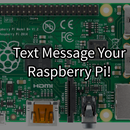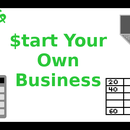Introduction: Ubuntu: Getting Started (11.04)
Ubuntu is a linux operating system based off of Debian. It is my personal favorite distribution of linux. While Ubuntu is a great operating system, it can create some issues for both new and advanced linux users. This instructable is to help demystify Ubuntu and give you some things to get started correctly.
I have been a Ubuntu user for around 3 years now. I have been playing with it since 2008, but I have recently been using it as my main operating system. I have experienced a few glitches over the years, but Ubuntu is by far one of the best OS's if you have the right hardware and setup.
Now I am using Ubuntu for most of my school work and all of my audio and video processing and editing. Ubuntu works amazingly well on my 7-year-old Dell laptop. If you have a newer computer, it will run wonderfully.
For this instructable, you will need:
A computer
The Internet
A Blank CD
A CD Burner
A Hardrive big enough to hold Ubuntu
This particular instructable is for Ubuntu 11.04. The things in this 'ible should work across most versions of Ubuntu, but I cannot guarantee that. In Ubuntu 11.04, a few things changed from the older versions of the OS.
If you don't feel comfortable doing this, invite a computer-savy friend over to help you out a little. Enjoy a glass of lemonade with your friend and have a wonderful time installing your new OS. I am not responsible if you mess up your computer. You either did something wrong, or you didn't follow my instructions correctly. I highly recommend you back up your computer on an external hard drive in case your computer loses power during the install or you accidentally mess something up.
There are many ways to install ubuntu other than the CD method. There is another instructable that discusses the Wubi method. I have no experience with that kind of install, but I hear that it is much simpler. You may want to consider Wubi if you are uncomfortable editing a few settings on your computer.
Step 1: Install
The first part of the process to Ubuntu nirvana is downloading the OS. At ubuntu.com, you can download the operating system (aka ubuntu.) On the web page, there will be a link to the most recent version of Ubuntu. Download it and burn it to a CD as an ISO disk, it will not work if you burn it as a data disk. Ubuntu.com has in-depth instructions for installation and burning if you need more help.
The install process is a bit simpler than you might think. First, you need to make sure that your BIOS boots to CD before your hard drive. To edit your BIOS settings, go to http://pcsupport.about.com/od/fixtheproblem/ss/bootorderchange.htm and follow the instructions.
After changing the boot order of your computer, you need to turn off your computer and insert the CD. After you turn on the computer, it will take a few minutes for the installation to begin. Just wait. Don't turn off your computer, it shouldn't take longer than 5 minutes or so and it only took about a minute and a half on my computer.
After playing the waiting game, you will be prompted to install immediately or to try Ubuntu out first. I recommend that you try it out first. When you are trying out Ubuntu, you will see if it is compatable with your computer, this is important. Ubuntu doesn't support some pieces of hardware. By trying it out first, you can see if it is compatable with your hardware. When you try it out, you should connect to the internet, try some basic functions, and see if you have sound. If all of these work, you should be okay to begin the install.
The first few prompts are really easy. Just fill them out. Make sure your keyboard layout is okay and follow the instructions. If you are trying to dual-boot (running Ubuntu in conjunction with Windows, Mac, or another OS), you may need to partition your hard drive. Ubuntu needs at least four gigs for itself (I recommend at least 10 gigs, 20 or more if you are going to use Ubuntu as a main operating system) and a 1-2 gig swap file. Partition your drive and assign the partitions to the proper functions (storing the OS or swap).
Follow the rest of the instructions and wait for the install. It may take up to 2 hours to fully install. Make sure that you DO NOT unplug your computer AT ANY TIME during the install, you may screw up your computer and I am not responsible for that.
After the install, connect to the internet and download and install all the updates. There are no pictures for this step because there isn't really anything to take a picture of......
Step 2: Restart
After downloading and installing updates, your computer will need to restart. Press the restart button and watch. You will see a new boot load screen. This is called Grub. Grub is where all of your OS's are shown, and you can select between them to boot. It will look different and some might freak out at this point. It is going to look different, and this is normal.
My Grub Screen looked purple and it had Ubuntu at the top. In other versions of ubuntu, the grub may look different.
After booting into Ubuntu, select your username and enter your password into the proper boxes. Now the fun can begin........
Step 3: Bugs, Issues, OMG Moments.....
Computers will be computers. Sometimes computers decide to act dumb and screw up. If your computer has a dumb moment, don't worry. It can be fixed. Occasionally an install won't occur correctly, this happens sometimes, and I have some basic rules of thumb if you experience a bug.
Rule #1: Don't freak. Your problem is fixable, and you will probably be able to return your computer back to it's old state if it isn't.
Rule #2: Research your problem. Ubuntuforums.org is a great place to go for help. There are advanced and new users alike that can help you out. If you don't see your issue after searching, make a thread and see if someone can help you out or offer some advice.
I haven't experienced any glitches with this version of Ubuntu (11.04), but if you do experience glitches, you feel like doing what is in the picture. Most problems are fixed in Ubuntu with a little research.
Step 4: Check It Out.
We have installed Ubuntu and have gotten past any major kinks in the system. We can now begin enjoying our new operating system. If you are using 11.04, the default desktop will look a bit different than mine. I have customized my computer to suit me, but the basic ideas are the same.
Take in your wonderful computing machine of wonder. Ubuntu runs amazingly fast, and it will be much better than windows after we are done. There are a few handy applications installed already, but we will make ubuntu a much more functional operating system by the end of this instructable.
First, get acquainted with all of the features of ubuntu. Check out OpenOffice or LibreOffice if you are using 11.04. Check out firefox, the internet browser. Play a few games and get a general feel for the layout.
There is this wonderful thing in Linux called the Terminal. If you are familiar with windows, the terminal is like the command prompt of windows, just much much better. We will be using the terminal quite a bit in this instructable because it is quite handy. Don't be scared by the all text window, using the terminal will become second nature after a few commands.
Step 5: Adding Some Functionality
The first thing we can do is install the Ubuntu Studio packages. Ubuntu Studio packages are really nice. They include codecs, applications for audio and video, and they make our computer a media machine. To install these packages, go to the terminal and paste:
sudo apt-get update && sudo apt-get install ubuntustudio-desktop ubuntustudio-audio ubuntustudio- audio-plugins ubuntustudio-graphics ubuntustudio-videoYou will be prompted to enter your password, enter it. Answer yes to the prompt asking if you want to confirm the install. Your computer will begin downloading the files necessary to install the lovely Ubuntu Studio applications.
At some point during the install, you will be asked if you want to enable realtime controls, click yes. These controls are important for audio processing.
After installing the Ubuntu Studio package, go to firefox. Go to this link to get flash: http://get.adobe.com/flashplayer/ Download the package for ubuntu. Installing flash will allow you to watch youtube videos and play little online games.
You will be downloading codecs for audio files. These codecs will allow you to read and use iTunes files and other lesser-known or rarely used music formats. These are extremely helpful.
Step 6: PROGRAMS AND PLAYTIME!!!
You are probably wondering "Why did I just spend an hour of my time downloading this stuff?" Well, the hour and a half you just spent downloading stuff has now paid off. You get to play with your new fancy Ubuntu computer.
In the Ubuntu Studio Packages, you have everything you need for Video, Audio, and Picture editing and creation. Ubuntu has some of the best free software ever. Take the time to try out the applications. You won't need windows for much anymore. Ubuntu rocked the world with its high-quality free software.
In the audio applications, you have a drum machine, a guitar effects processor, a recorder, and several software synths. These would cost several thousand dollars for Windows, and they are better in some ways.
Ubuntu's video applications are pretty crazy from what I have heard and experienced. I am more of a music guy, but I have tinkered with video editing in Ubuntu, and the quality can be amazing if you take the time to make things look nice.
Ubuntu in its stock form doesn't have too much for picture-crazy people, however, you can go to Applications -> Ubuntu Software Center and search for Gimp. Gimp is like a free version of Photoshop with all the features. You can download expansions and plug-ins for free for Gimp online on certain web sites. I highly recommend Gimp for picture editing.
Step 7: Printers....
I haven't had much experience in setting up printers in Ubuntu. Here is a link that explains it in a pretty straightforward manner:
http://nixcraft.com/getting-started-tutorials/468-howto-ubuntu-linux-setting-up-my-your-printer.html
Step 8: Editing Your Desktop Background and Etc.
Editing the appearance of your computer has changed in Ubuntu 11.04. You need to download Ubuntu Tweak from the Ubuntu Software Center. This will allow you to change the entire appearance of your computer from one interface. It is super simple to use, and I have had no issues with it whatsoever. It is self-explanatory and it provides instruction as you go along.
After installation, you can change the font for the entire computer. You can change the background and login screen. Your options limited to your imagination.
Step 9: Enjoy Your New OS!
I have gotten you started in Ubuntu. Enjoy working with linux, it can be quite an enjoyable experience when everything is done correctly from the start. If you are wanting to download more programs, you can go to Applications -> Ubuntu Software Center to download a myriad of free software to do what you need.
Ubuntu can serve a variety of purposes. A lot of people like ubuntu for its media potential. I have seen people use ubuntu as a home server and as a SQL and webhosting server. I have written web pages in ubuntu by hand and by software. It is amazingly easy if you use software for writing html, and it speeds things up a little. Find programs that do what you want them to do. Ubuntu has something for everyone, whether you are a developer, a media guy, or an artist.













